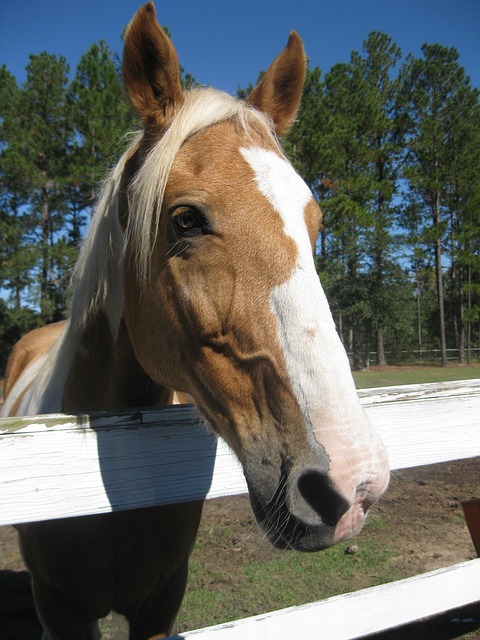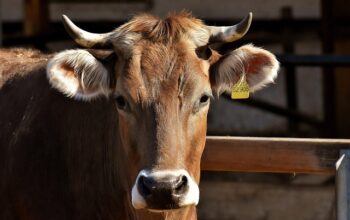Cattle behavior dictates robust, high fences with line-of-sight access for well-being and security. Ontario farmers have options: high-tensile wire, wooden posts & rails, or eco-friendly plastic materials. Durable designs, using steel posts & galvanised wire, stand at least 8 feet tall, considering terrain and water sources. Regular maintenance, including inspections and repairs, ensures a safe, efficient fence for cattle operations.
Ontario farmers seeking robust cattle fencing solutions face unique challenges. This guide delves into expert-recommended strategies tailored to Ontario’s specific cattle behavior and environmental factors. From understanding fence requirements to selecting suitable materials, designing efficient barriers, and ensuring long-term maintenance, we provide comprehensive insights for installing a reliable fence for farms. Implement these practices for enhanced safety, security, and productivity.
Understanding Cattle Behavior and Fencing Requirements in Ontario
Cattle, like any livestock, have specific behaviors and needs that must be considered when designing a fencing system for farms in Ontario. Understanding their natural instincts is crucial to creating an effective barrier. Cattle are herd animals with a strong tendency to graze and roam, often seeking open spaces. They can jump, climb, or push against fences, especially if they sense open areas beyond. Therefore, the fence for farms in Ontario should be robust enough to withstand these behaviors and have sufficient height and strength to prevent escape.
In addition to considering their physical abilities, it’s essential to understand that cattle prefer line-of-sight access to their surroundings. They can become agitated if blocked from viewing their environment, potentially leading to destructive behavior. Farm fences should be designed with this in mind, incorporating open mesh or horizontal rails to allow for visibility while still providing adequate security. Such thoughtful design ensures the well-being of both the cattle and the overall farm management.
Types of Fencing Materials Suitable for Cattle Farms
When it comes to fencing for farms, Ontario farmers have a variety of materials to choose from that are durable and suitable for managing cattle. One popular option is high-tensile wire fencing, known for its strength and ability to withstand heavy grazing pressure. This type of fence is also relatively easy to install and maintain, making it a cost-effective choice for many cattle farms.
Wooden posts and rails are another common option, offering a classic look that blends well with rural landscapes. While they may require more maintenance than wire fences, wooden posts provide a sturdy barrier that can last for decades with proper care. For a more eco-friendly approach, some farmers opt for recycled plastic or composite fencing materials, which are durable and require minimal upkeep, making them an excellent long-term investment for cattle farms across Ontario.
Designing a Durable and Efficient Cattle Fence
When designing a cattle fence for farms in Ontario, durability and efficiency should be top priorities. Experts recommend using robust materials such as high-strength steel or wooden posts with galvanised wire or poly rope to ensure longevity against weather conditions and livestock. The fence should be at least 8 feet tall to deter cattle from jumping, with additional electric fencing added for extra protection.
The layout of the fence should consider the terrain and natural water sources, aiming to direct animals towards these points for easier management. Curved or zigzag designs can also help reduce stress on the livestock and prevent them from getting tangled in the fences. Regular maintenance, including checking for any loose connections or damaged sections, is crucial to keep the fence functional and effective.
Installation, Maintenance, and Long-Term Care Tips for Optimal Farm Safety
When installing a cattle fence in Ontario, proper execution is key for long-term effectiveness and safety. Ensure the fence is securely anchored to withstand strong winds and animal pressure. Use high-quality materials that are durable against rust, rot, or damage from hooves. Regular installation checks by professionals can catch minor issues early on, ensuring the structural integrity of your farm’s perimeter.
Maintenance plays a vital role in keeping your cattle fence safe and functional. Regular cleaning to remove debris prevents entanglement hazards for livestock. Inspect fences post-storm or after significant weather events to identify any damage that may compromise safety. Repairs, such as fixing broken posts or replacing worn-out wires, should be addressed promptly. Long-term care also involves planning for replacement parts and regular lubrication of moving parts to ensure smooth operation. By prioritizing these tips, farm owners can maximize the lifespan of their fences, ensuring optimal safety and efficiency for their cattle operations.
When it comes to cattle fencing in Ontario, understanding both the behaviour of your livestock and the unique requirements of the region is key. By selecting suitable fencing materials like high-quality wire or robust wooden posts, you can design a durable and efficient fence. Regular installation, maintenance, and long-term care will ensure optimal farm safety, providing a secure environment for your cattle to thrive. Implement these expert-recommended solutions to create an effective farm fence that stands the test of time.




